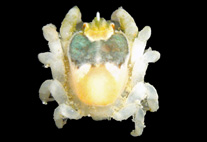Abstract
A natural population of thrips, the insect order Thysanoptera, rarely comprises more than 30% males (Mound 2005), and this situation is particularly obvious in the family Aeolothripidae (Mound 1992). Thus for 46% of species of Aeolothripidae in Britain the male is not known (Mound et al. 1976). Aeolothrips is the most species-rich genus in this family, and males are not described for many species. For example, according to Bailey (1951), 13 out of 33 species of Aeolothrips in North America are known only from females, and males are not known for 9 out of 38 Aeolothrips species recorded from Europe (zur Strassen 2003). Species of Aeolothripidae are often collected in low numbers (Mound 1992), thus reducing the probability of a male being collected. So it is predictable that if a good series of specimens of a species can be collected, then a male is more likely to be found, even for those species of Aeolothrips in which the male is not yet known.

